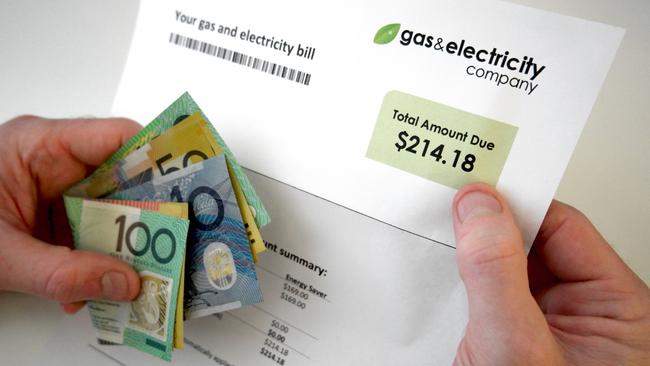SA Government pushes retailers to use ‘solar sponge’ tariffs to cut household power prices
To fix the problem of too much solar in the middle of the day, there’s a plan to soak up the excess and make power cheaper for everyone. Big energy companies want to do it their way but the government wants to force their hand.
SA News
Don't miss out on the headlines from SA News. Followed categories will be added to My News.
Electricity retailers and the State Government are facing off over how to implement changes which could save households hundreds of dollars a year.
The government is looking to force retailers to act while the companies say interference in the market would make things worse — and the biggest retailer, AGL, is already offering a deal that, in theory, could save an average household $800 a year.
At issue are changes to the way costs of the poles-and-wires run by SA Power Networks are paid for.
From July 1, a new system is being phased in where energy used in the middle of the day is distributed at a 75 per cent discount — under a new “solar sponge” tariff — while using power at peak morning and evenings times attracts a 25 per cent penalty on the base rate.
The solar sponge aims to stabilise the grid by reducing technical problems of too much solar and cut peak demand – cutting costs on both fronts.
It would “provide an incentive to residential customers who are able to shift consumption”, the Australian Energy Regulator said in approving the tariffs.
“Retailers are the focus of cost-reflective network tariffs,” the AER said.
“They are the ones who manage a number of risks, including volatile wholesale market prices and network tariff signals, to develop retail offers for consumers.
“ … More cost-reflective network tariffs should result in retailers providing more choice for their consumers, including more innovative options.”

In a consultation paper to the industry, the government said the “power system is already facing serious security risks” which will intensify this spring.
It told retailers it proposed to force them to offer contracts by September giving consumers financial incentives to use power in the middle of the day.
The new contracts would only be available to homes with smart meters which record the time of use of energy, currently in about one in five homes.
Distribution costs, which make up about a third of a bill, are not charged directly to customers. SAPN charges retailers, who merge it with generation, transmission and other costs such as environmental levies then add their costs and profit margins in a deal offered to consumers.
AGL rejected the government’s move saying “any regulation of retail tariffs is detrimental to a competitive retail market”.
“It is likely to constrain the products and offers made available to customers,” AGL said.
It was also unnecessary – AGL has a standing offer available from August and said it would soon introduce a market offer (where discounts may be available).
In a theoretical case where an average household on AGL’s new standing offer only used electricity in the solar sponge it would save $800/year compared to only using it during peak periods.
While that is unrealistic, a household which only ran power-hungry appliances like air conditioners, washing machines, pool pumps and heaters during the day and just low-power devices such as lights at night, they would save $100s.

Second biggest retailer Origin also rejected the government’s plan.
“Such an approach will likely lead to confusion amongst customers for little or no likely benefit,” Origin said.
“We do support time-of-use signals but would prefer an incentive-based approach and one that … is more easily explained to customers.”
Simply Energy, the third biggest retailer in SA, said “highly prescriptive regulation” was neither necessary nor appropriate and that other solutions, such as batteries in a virtual power plant were more useful.
“Ideally, any tariff reform in South Australia should drive engagement and protect customers from being disadvantaged as we move toward household storage solutions,” Simply Energy chief executive Shannon Hyde said.
A government spokesman said the feedback was being considered and an outcome would be announced shortly.
The government consultation also considered technical standards to pursue the idea of solar systems being capable of remotely controlled to manage the grid.
Most submissions called for more research, more time and co-ordination with national initiatives on the issue.
SA Power Networks – new tariff structure
Peak – charged at 125% of the base rate – 6am-10am and 3pm-1am.
Off-peak – at 50% of the base rate – 1am to 6am.
Solar sponge – at 25% of the base rate – 10am to 3pm.
AGL new standing offer for homes with smart meters
$323 – supply charge for year
24.4c per kWh usage in solar sponge (shoulder) period
44.5c per kWh usage in peak
27.9c per kWh usage off-peak
Maximum difference average home
$1300/year – only use power 10am-3pm
$2104/year – only use power during peaks
$804 difference
Notes
Only available to homes with time-of-use smart meters.
AGL contract available from August 1.
Average annual usage of 4000kWh/year.
